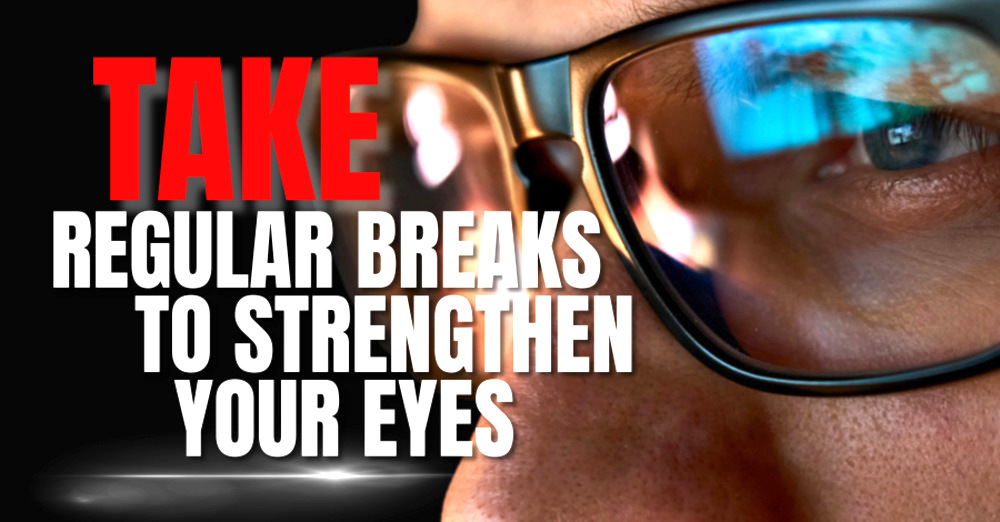
As a computer engineer, Pablo spends most of his time in front of a computer screen. He loves his job, but lately, his eyes are tired, dry, and red, causing a constant headache. At first, he ignores it, but the symptoms persist, and he is worried. Paul suffers from “eye fatigue,” which occurs when the eyes are strained by screen brightness and contrast, thus increasing the workload on the eye muscles. Today, with the prevalence of television, computers, video games, and smartphones, most suffer from eye fatigue. Driving a car and living in a smog-filled city are other significant reasons for eye fatigue. The eyes hurt so much that one must close them for some time.
How to recognize what is called “asthenopia”? Eye fatigue or asthenopia corresponds to a temporary disturbance in the functioning of the eye as a consequence of excessive visual use. It affects everyone, but people with vision problems (presbyopia, myopia, hyperopia, astigmatism) are more exposed.
What are the symptoms associated with eye fatigue? Decreased visual acuity; sensation of glare or double vision; alteration of the visual field. Eye fatigue manifests as itchy, irritated, dry eyes, resulting in insufficient tear secretion, red eyes, and infrequent blinking. Eye fatigue also generates headaches above the eyes.
If you work in front of a computer daily, you need a break of about five minutes after every hour. What to do? Close your eyes and do nothing. If you read continuously, take a break every 30 minutes to look far into the distance. When you read up close, a muscle in your eye contracts. Then, shifting your focus to an object in the space relieves the strength of its tension.
Nature has given human eyes their masseur, namely the eyelids. Every hour, blink your eyes for 20–30 seconds instead of squinting them. It will provide them with the massage required to avoid eye fatigue.
🔟 TIPS TO PROTECT THE EYES.
1 – Complete visual examination for any ocular anomaly. 2 – Lighting and glare. Bright light and excessive glare tire the eyes and make seeing objects on the screen difficult. Find a suitable location away from direct light and glare. 3 – Blink. It keeps the eyes lubricated and prevents dry eyes.
4 – Lubrication. If the eyes are dry, lubricating drops control the discomfort. 5 – The “20-20-20” rule. To reduce eye fatigue, every 20 minutes, look at something 20 feet (6.1 meters) away for 20 seconds.
––––––––––
6 – Special glasses. Use prescription glasses for specific activities, such as computers or reading. 7 – Controls. Adjusting the brightness and contrast of the screen reduces eye fatigue. 8 – Glare. Screen glare causes eye fatigue by preventing the eyes from adapting. Using an anti-glare screen or blue light filter reduces glare.
9 – Height and distance. The screen should be comfortable for the eyes and an ideal height for each person. 10 – Rest. If you work in front of a computer for a long time, take regular breaks to strengthen your eyes.
––––––––––
🟧❓FREQUENTLY ASKED QUESTIONS
How often should you visit the ophthalmologist? Once a year to detect vision problems and prevent eye diseases.
What are cataracts? A disease that clouds the eyes as time goes by. It is a clouding of the crystalline lens, the lens of the eye, which makes vision difficult.
Why do eyes become red? There are several reasons, such as conjunctivitis, excessive rubbing, eye fatigue, and sun exposure.
How to prevent eye discomfort? Protect your eyes from sun exposure, maintain a healthy diet rich in vitamins and minerals, and never rub your eyes with dirty hands.
Why is near vision lost after the age of 45? At this age, presbyopia, or eyestrain appears, which hinders the ability to focus on close objects because the crystalline lens loses its elasticity.
What are dry eyes? When the eyes do not produce enough tears or are not of adequate quality to keep the eyes lubricated, it causes irritation, redness, gritty sensation, and blurred vision.
––––––––––
🔵 EYES
––––––––––
––––––––––
